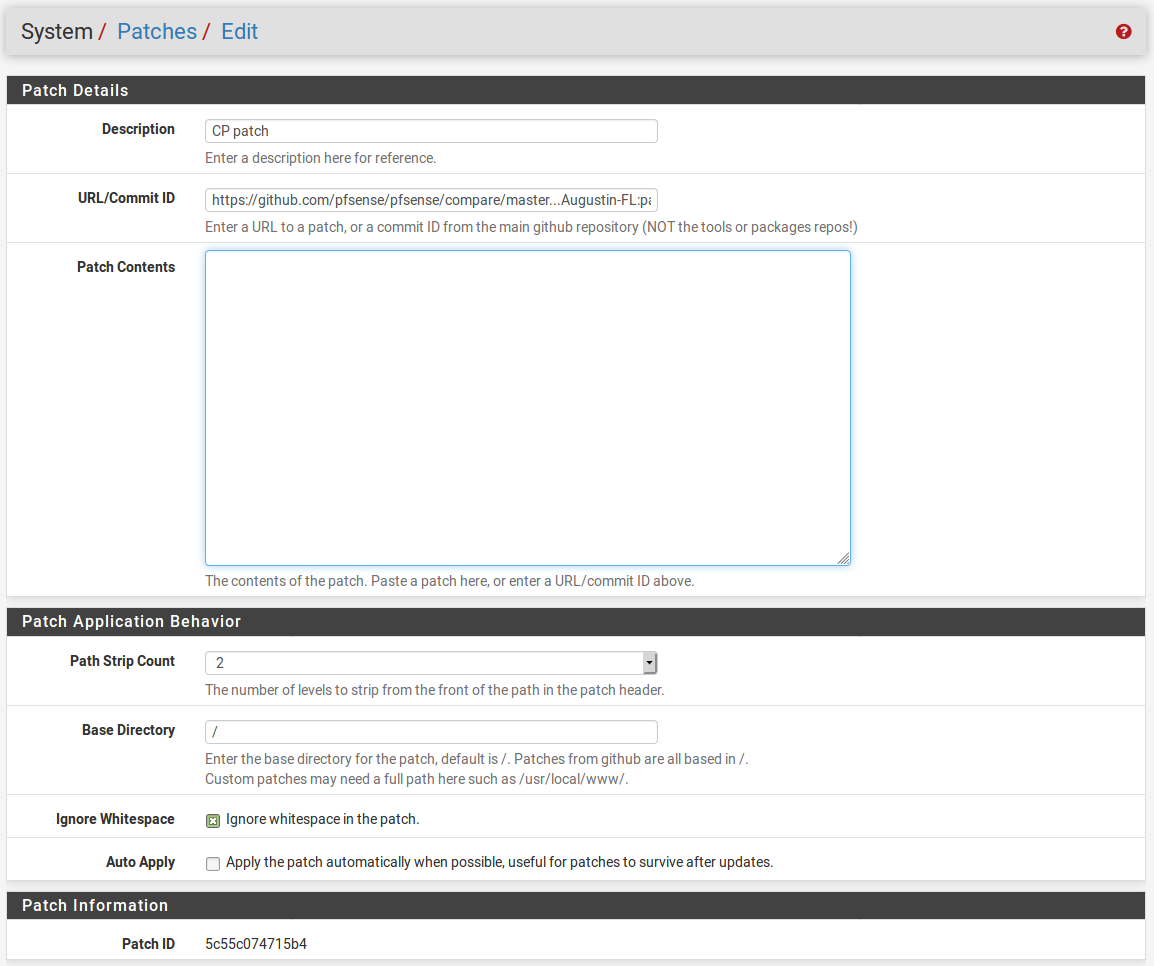Pfsense Wifi Internet May Not Be Available
Netgate offers the 802.11a/b/g/n wireless kit for APU but configuring pfSense to use it is not immediately apparent and I was not able to find a recent how-to or tutorial on how to do the setup. This tutorial is using pfSense 2.2 but should work with 2.1 as well. This tutorial will help you configure a bridged LAN Wi-fi network.
I get 'Internet may not be available' on my new Samsung J5 Prime around every 5 minutes.
This did not happen with other Android devices on the same Wi-Fi router.
What can be the problem?
Model SM-G570M
Android 7.0
2 Answers
As strange as it seems, I now have come to an understanding that this issue may be related to an IP address conflict between the router and the connecting device or at least a faulty DHCP implementation (as discussed in some Samsung forums but for slightly different models).
It could perhaps a bug related the way the router handles 2.4GHz <=> 5GHz switching, causing an uncomplete handover (5GHz SSID to 2.4GHz or vice versa) (but users complain its worse when dealing with 5GHz only)
A probable workaround is setting static IP address for the wi-fi:
Go to your wifi connections, long tap on the connected wifi, until it gives you option to manage network setting,
Then choose advanced option, and put your IP type on static, then use a new ip address (for example, if it's
192.168.1.xchange it to192.168.1.ywhere y can be a value 2-100 for simplicity )Make sure that ip is empty in your router and your gateway is your router IP address, first DNS your router IP address, second one Google DNS (
8.8.8.8or8.8.4.4) and save it, turn your wi-fi off and on.
Statistical quality control formulas. You may preferentially set the wi-fi SSID to use the 2.4GHz range.
Acknowledgements
xavier_fakeratxavier_fakeratJust bought a new Samsung J9 phone which had the same problem. I unsuccessfully tried various fixes but finally (should have done this first!) looked at the IP settings. The Ip was set to a static value of 192.168.0.100. However, my home network has IPs 10.1.1.xxx. When I changed the IP setting from Static to DCHP and switched the phone on and off, the problem was solved.
Not the answer you're looking for? Browse other questions tagged wi-fisamsungconnection-issuessamsung-galaxy-j5 or ask your own question.
Netgate offers the 802.11a/b/g/n wireless kit for APU but configuring pfSense to use it is not immediately apparent and I was not able to find a recent how-to or tutorial on how to do the setup. This tutorial is using pfSense 2.2 but should work with 2.1 as well.
This tutorial will help you configure a bridged LAN Wi-fi network. We won’t be dealing with creating a guest wifi network but if requested I’m willing to do that later.
It’s all about the bridge
The most tricky part of this is configuring the LAN bridge to the Wi-fi interface. I’m going to assume that you already have a LAN interface configured and your pfSense is working great. Now all you want to do is configure the wireless.
If you go to Interfaces->(assign) you probably see something like this.
Now in order to create the bridge without getting disconnected we need to do a bit of trickery.

Assign a new interface to something that is not in-use. For example a network port that you’re not using or even create a PPP interface temporarily just so you have something to assign it to. Once created it will probably be called OPT1 or OPT2. Go ahead and click on it, enable it, and rename it to LAN_PORT. It should then look something like this.
Wifi May Not Be Available
You should also have an interface assigned for you wifi card such as the wireless kit from Netgate. It might look like this.
And if you open the interface it should be enabled.
IPv4 and IPv6 configuration should be set to None for both the Wifi and LAN_PORT interface.

Now it’s time to actually configure the bridge. Under Interfaces->(assign) click on the Bridges tab. Click the + icon to add a new bridge.
Under Member interfaces select both the Wifi and LAN_PORT interfaces that you setup.
Click Save and apply these changes and you should see something like this.
Now go back to Interface assignments, and we want to adjust the assignments a little.
Assign the BRIDGE0 port to your LAN interface. And assign the port that was originally assigned to your LAN interface to the LAN_PORT interface. It should then look something like this.
In my case re2 was originally assigned to LAN and is now assigned to LAN_PORT.
Save these settings and apply, and you’re finished with the bridge!
More Wi-fi Settings
Now it’s time for the wireless settings. There are some gotchas that we’ll mention, but first here are screenshots of my configuration that is working great.
(To get to this configuration click on the Wifi interface from the Interfaces assignment tab.)
WPA Pairwise has to be set to Both, if you set it to AES the wifi will stop working. In my testing I found it was best to set WPA Mode to WPA2 and leave the Pairwise set to Both.
Otherwise you should be fine copying all the wireless settings from my screenshots, of course you’ll choose a different pre-shared key and SSID 🙂
Remember that your LAN IP address and other network settings must now be configured on the interface that you assigned to the bridge, and also DHCP should be enabled on that same interface.